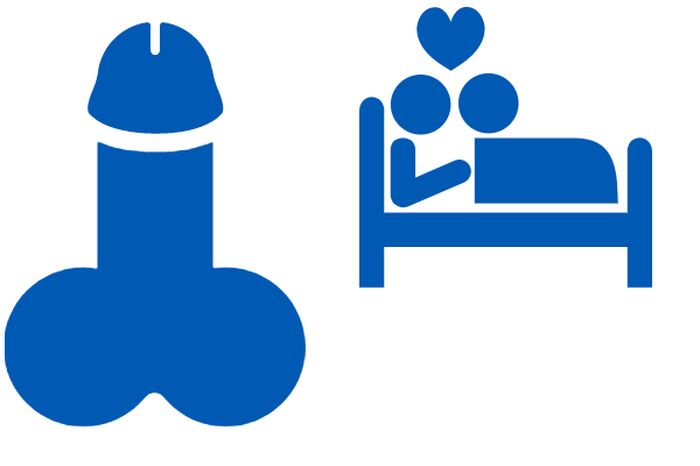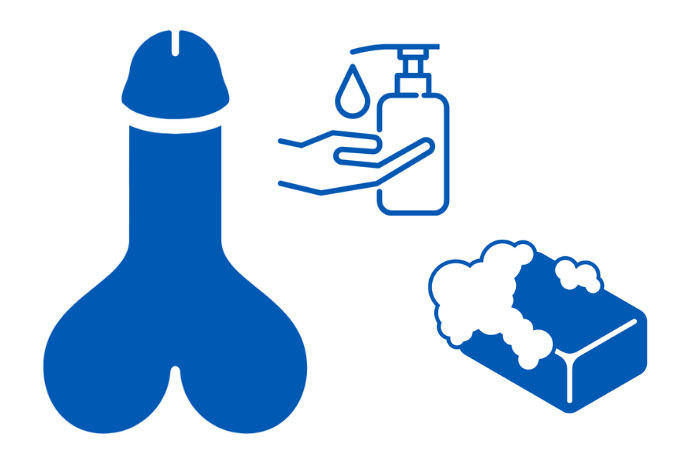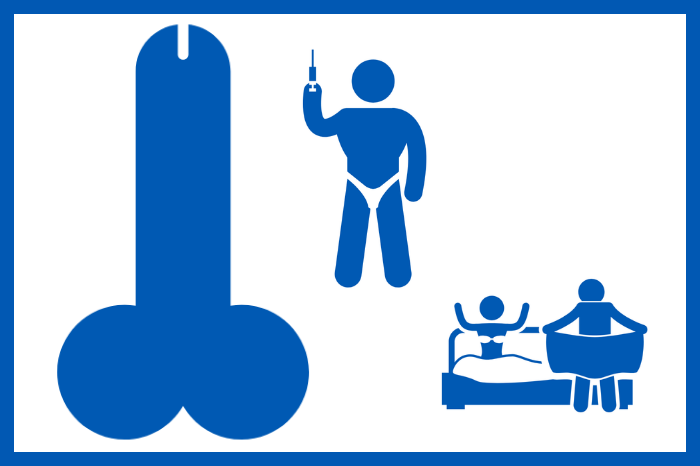What is and how to be an assertive person
Learning to be more assertive can greatly improve your quality of life. We can all think of times when we know we should say or do something, but we don't. We feel like we're not enjoying the moment, but we just accept it.

It's easy to not be assertive, because it's something more subtle, like for example, after an important meeting at work, we find ourselves thinking, "If only I'd said something!"
A lack of assertiveness is a sign of a more serious pattern called "Nice Guy Syndrome".
In his book, No More Mr. Nice Guy, Dr. Robert Glover describes how many men fall into the habit of denying their own needs and limits. Instead of feeling confident in expressing their opinions, they seek validation from others and avoid confrontation at all costs.
Nice Guys think that because they are being selfless, somehow their needs will be magically met. And how does it work for them? Not very well. On the surface, Nice Guys put on a smiling face, but inner resentment mounts.
The moment they start talking, they explode with over-the-top speech. Sometimes this outburst of emotion is so aggressive that they feel guilty afterwards, which only adds to their sense of frustration and helplessness.
As psychologist Adam Galinsky describes in his TED talk, "How to Speak Up for Yourself," many people feel doubly screwed about expressing their own needs or limits: if you don't speak up, you're screwed. And if you talk, you're screwed too.
So how can we avoid this? The secret is to learn to communicate assertively.
What does assertive mean?
Before explaining the meaning of assertive, we must first mention that there are two more types of communication besides assertive: passive and aggressive.
Passive communication is called complacent, where people end up accepting everything just to avoid conflicts, even if they don't think it's fair or will be good for them.
Passive people are generally more submissive and tend to believe that other people are more important than them. They usually adopt a more collected posture with a low tone of voice and looking down. Because they always put the will of others first, complacent people find it difficult to achieve their goals.
Aggressive communication, unlike passive, is based on using a high tone of voice, in addition to postures, gestures and words that challenge and intimidate people. Hostility and sarcasm are used by aggressive people in communication.
An aggressive person tends to see himself superior to others, thinking he has the right to interrupt and disrespect others. Aggressive people believe that things should be done their way, as they believe that they are always right. They tend to get angry, irritate others and easily make enemies.
The meaning of assertive is often misunderstood. Many people confuse being assertive with being passive-aggressive. But they are by no means the same. Contrary to what some people think, being assertive is not trying to intimidate other people with a smile on your face.
As Randy J. Paterson says in The Assertiveness Workbook, "Assertiveness means controlling your behavior, not someone else's."
Being assertive means taking responsibility for your own needs and actions and communicating them constructively. Rather than using intimidation or fear to control other people, assertive communication means being calm, intelligent, and knowing how to lead the conversation.
Being assertive means asserting our rights and expressing our wishes in a respectful, intelligent and peaceful way, respecting all people equally and creating an environment of empathy and trust, where there is no room for mistakes.
Being assertive also means taking responsibility for your own needs and actions and communicating them constructively.
When you learn how to be more assertive and can advocate for yourself, other people will have more respect for you.
Most important of all is that you respect yourself. Even if you don't speak up in something, you don't criticize yourself, as you maintain a healthier mindset and don't carry resentment, like men who struggle with Nice Guy Syndrome.
At this point, you may be thinking, "Sounds great, but I'm just not an assertive person. That's not my personality."
It is true that some people are naturally assertive communicators. But communication styles are not fixed characteristics - they are fluid. In fact, most of us fluctuate daily between various communication styles, depending on the situation.
The thing is, assertiveness is something you can develop, even if you are naturally drawn to one of the other communication styles, passive or aggressive.
Therefore, knowing how to be more assertive in communication is ideal for your social interactions!
How to be more assertive in communication, at work and in any situation?
Here are some specific tips and techniques on how you can be more assertive in almost any situation.
One of the biggest barriers to expressing your needs assertively is not knowing what they are. Many people are stuck in this frustrating cycle. But it's not fair to blame other people if something doesn't go your way, if you can't even articulate your own needs.
After taking the first step in identifying your needs, you now need to communicate them effectively.
One thing that often prevents people from communicating assertively is when they lack confidence that their needs are valid.
You shouldn't feel guilty telling people what you need, as long as it's not something ridiculous or something that seriously annoys them.
Example of being assertive
Let's say your coworker has decided to take a break from work on Friday so he can take a last-minute sightseeing trip. He sends you a hastily written email on Friday morning asking you to cover two important tasks for him that day.
You don't feel good about saying no because he's helped you in the past. At the same time, you feel that your colleague has overstepped their bounds by giving you these last-minute tasks. So you answer calmly like this:
"John, I'm happy to help you right now. But in the future, I'd really appreciate it if you could let me know at least 48 hours in advance so I can accommodate the additional workload."
Since your request is reasonable, João will not fail to agree with you. And instead of silently beating yourself up for it, you feel better because you've defended yourself... Besides, you've set some ground rules for how you're willing to help in the future.
While a large part of assertive communication involves focusing on what you want, you will succeed if you consider other people's needs as well.
Recognizing the needs and interests of others can be a lever to help you get what you want. This is an age-old negotiation technique: looking for ways to create win-win situations.
When you see the other person's perspective, it can help you identify something you can give them in return - or it can just help demonstrate that what you're asking is reasonable.
To do that, you need to cultivate genuine empathy for the other person. Don't assume they're trying to screw you; they are only interested in themselves, just like you.
So while it's good to be direct, establishing how things should be about your needs and boundaries through aggression can often backfire.
According to Adam Galinsky, the key to this is offering the person options. Instead of saying "this is how it has to be!" you will be more reasonable if you come up with a few different ways to achieve your goal. The key, of course, is to ensure that the options you offer are at least somewhat consistent with your needs and limits.
Let's go with one more example. At an advertising company, the vice president of marketing asks the employee quite often, "Can your team create this ad for $50,000 instead of $80,000?"
Even if it's not possible, instead of just saying no and being blunt, he could say something like, "I don't think we can do a 2-page ad on that budget. BUT...if cost is a concern, maybe we could reduce that to a one-page ad. Which wouldn't bring us to $50,000, but at least we could save something."
Were you able to notice the difference instead of just saying NO? The official said NO, but in a subtle way and proposing another strategy, giving an option.
Providing multiple options helps reinforce that you are at least TRYING to find a solution. And often, that goodwill is rewarded... or at least appreciated.
communicate calmly
Keeping calm is key to assertive communication. Even if there's no middle ground to solving the problem in sight, strive to maintain a calm tone of voice, slow down your speech, and keep the volume at a friendly level.
When you're screaming at the top of your lungs and that vein in your forehead starts pulsing, you don't look reasonable anymore - you look aggressive. This will only cause the other person to shut down... or get aggressive back.
And when that happens, guess what? People will empathize less with your perspective and be less likely to establish a healthy, respectful relationship with you.
The only way to make your "opponent" listen to reason is to keep them calm and in a rational state of mind.
When you communicate assertively, you sometimes find yourself in uncomfortable situations where you are forced to report someone else's behavior. The thing is, people are sensitive and often don't react well when they're criticized. In this situation, it is helpful to smooth the communication with the right approach.
Being assertive means making your own decisions about what you will and will not do, and accepting the consequences and responsibility for your behavior.
You can explain your needs matter-of-factly, as if they were fundamental requirements that cannot be violated.
In the book "How to Say No Without Feeling Guilty," Patti Breitman and Connie Hatch go a step further, suggesting that you use the phrase "I have a policy..." This approach can be extremely helpful when you feel pressured to do so. something or make a decision on the spot.
You can say, "Sorry, I have a policy that I can't buy anything from door-to-door salespeople." Or "I'd love to help you, but I have a policy that I can't do business trips on the same day without an overnight stay. I need to get some rest!"
It's almost comical, but talking about your fundamental needs and "policies" as if they were dictated by a higher authority somehow makes other people less likely to question them.
When you respect your boundaries, others respect them too.
This is probably one of the most useful tactics you can learn in assertiveness training. It can be especially useful in situations where you are dealing with a store or service company and you are not getting what you want. It goes something like this: you continue to calmly repeat your request... The keyword is calm.
Let's say you're picking up your clothes from the dry cleaners and one of your shirts has mysteriously ripped. Initially, the laundry worker is defensive, saying that the fabric is old and there is nothing he can do about it.
Instead of reacting to this and hurling profanities at them, you continue to make a specific request: "Well, I'd really appreciate it if you could give me a discount on the next wash" or "Still, I think you should discount some value for the damage."
You keep repeating variations of the request in a calm voice because it helps to add different versions to explain why you deserve what you're asking for, each time you reiterate your request. "Again, I've been coming here for years and I'm a very loyal customer. I would really appreciate it if you could give me a discount as a goodwill gesture."
Another important thing is to make sure your request is specific enough. When you communicate more assertively, it's amazing how smoother your interactions with other people are.
You no longer feel like you are not being heard or respected because you are able to speak for yourself. And you're able to calmly defend yourself... without looking like an aggressive guy.
Again, while some people may naturally feel more comfortable expressing their needs, assertiveness is a skill that anyone can develop. The best thing is, the more you practice, the easier it becomes to be an assertive person.



















